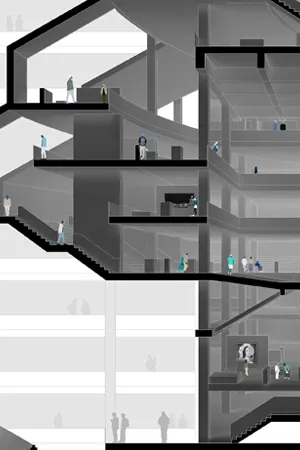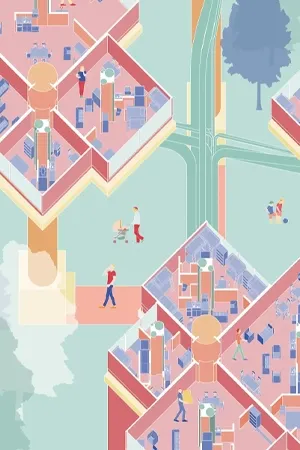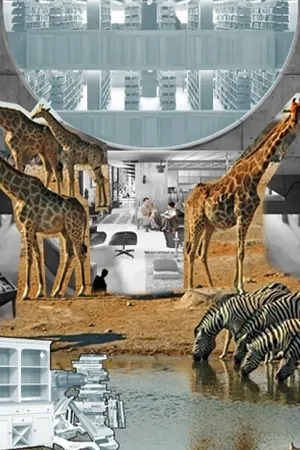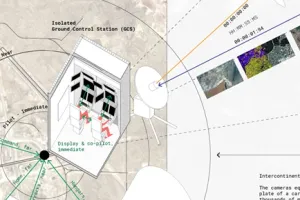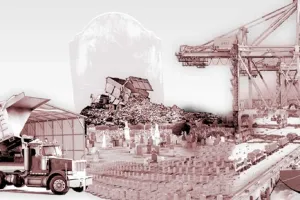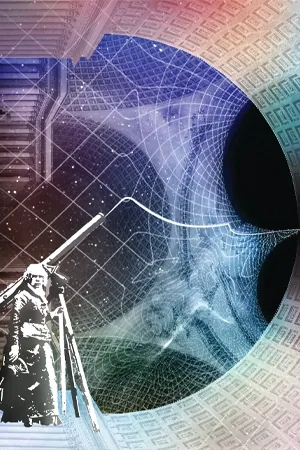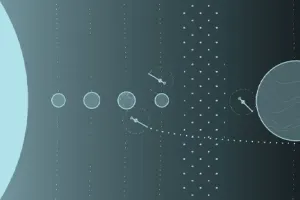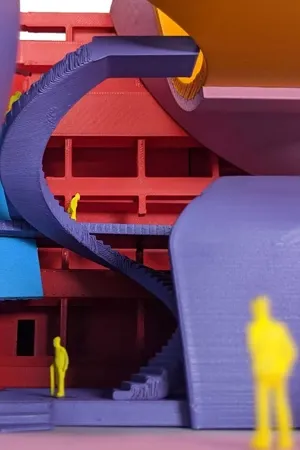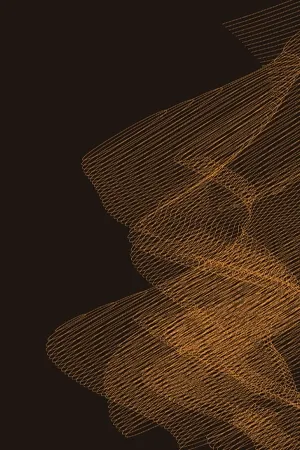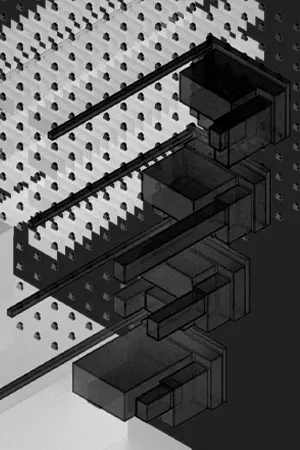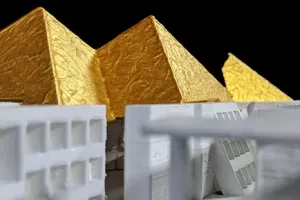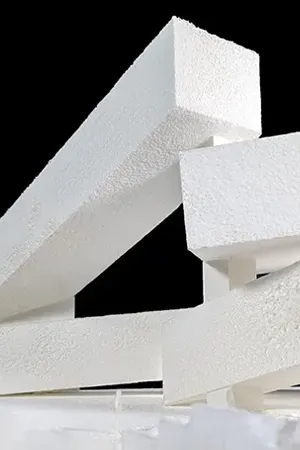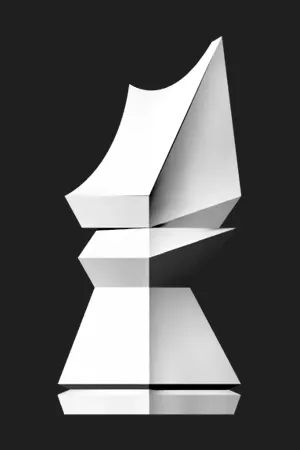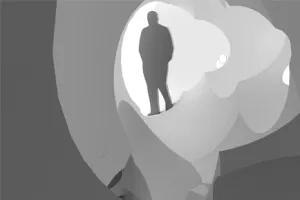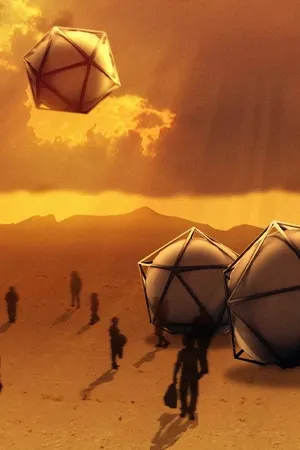![[Conserv/Labor]-atory](/content/images/size/w1140/2024/03/interior-high.jpg)
[Conserv/Labor]-atory

The Site
The project site is an L-shaped peninsula in the lagoon on the University of California Santa Barbara's campus. The program of the building is a combined laboratory and conservatory facility. It's an interesting prompt because with the lab there is the preconception of it being enclosed and sterile, and precise; whereas the conservatory is open, alive, and inexact.


The Warmup
Early on in the semester, there was a warmup project where I worked with wireframes. I aimed to combine ideas from the works of two artists: Liz Larner and Carmen Herrera, the former of whom has worked with wireframes, color, and the implication of form (see, "Distorting Form with Color") while Carmen's sculptural work often involves juxtaposing two similar forms (see, "Dos"). My project took a single red cube with a single distorted polygon, both sharing a single segment. What I thought was interesting was that despite originally designing the project to be a very binary comparison between the red cube and blue polygon, the shared segment was imbued with an unexpected power, becoming a crucial third player in the project. I took this discovery along with the design concept over to my final project.

Design Process
The design began in a similar fashion to the warmup. Two distorted cubes, positioned where one was above the other in a moment of tension. These two masses were then connected by a third piece, a sculpture that would act as the literal linking element between the masses as both circulation and structure. The interior program introduced additional levels of complexity to the project through surface articulation and implying form...more on that later.

Site Plan
Backing out to the site, lines were projected out to the site using the existing edges of the three main bodies of the building. The affected site was determined through intersections between these projected lines and their intersection with an existing walking path on the site. The resulting patchwork of spaces became open landscaped spaces, parking, and permeable walkways guiding visitors to the front door of the facility.



Program
The main entrance to the building is in the approximate Northeast corner. The driving concept behind the design of the first floor was community engagement. Public conservatory spaces meander along the perimeter, and organize in an orthogonal fashion at an open gathering space, a moment where human interference meets the natural world. Lab spaces, presumably closed off or secretive, are brought down and enveloped in glass, giving the public an opportunity to glimpse at work being done. The composition of the different floors is regulated by the same projection lines that informed the site design.




Moving up through the rest of the building, space is organized in a way that puts the laboratory in the core of the building, allowing the conservatory, auxiliary, or flex spaces take more advantage of light along the building's perimeter.The lab core, a central programmatic element linked between the two main bodies, is extended out beyond the front of the building via wireframe. Floor plates and larger spaces, such as lecture halls, were rotated, pushed, and pulled to stagger floors to promote more connectivity between the various levels.



Building Envelope
In a similar fashion with the design of the site, edges of existing formwork, largely the sculptural element, were drawn and compared to internal function when determining solid wall and aperture on the building envelope. To differentiate the two main bodies, glass on the lower form is frosted to diffuse incoming light and more evenly light the open public space. The lifted body is wrapped in a mesh skin that filters incoming light. Spaces mentioned earlier that were rotated, pushed, and pulled, break the original building envelope but are caught by the mesh in the now tensile skin. Conversely, the intersections with the lower body simply break the surface and jut out, furthering the difference between the two forms.




Model Images
Below are a few images of the model. I tried something a little different and soldered the building frame. It took a lot longer than I anticipated, and my imprecision caused some alignment issues with the facade. Rather than assemble a complete, yet shoddy, model, I left most of the envelope off to reassert the focus back onto the three main bodies.





Inspiration
Art
Dos - Carmen Herrera
Distorting Form with Color - Liz Larner
Why Clouds are Woven into Bed Linens - Jessica Stockholder
Architecture
Kukje Gallery - SO-IL
Vakko Fashion Center - REX
Artificial Excavation - Peter Eisenman
Studio was led by Viola Ago of Miracles Architecture.
